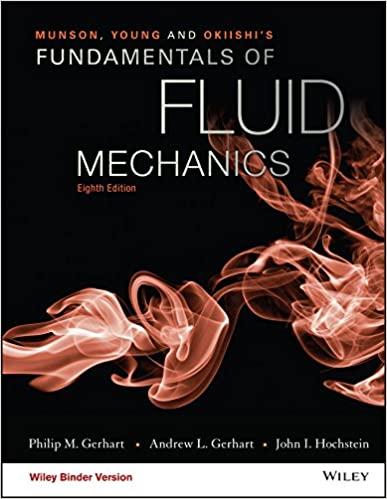Air is supplied to a convergent-divergent nozzle from a reservoir where the pressure is (100 mathrm{kPa}). The
Question:
Air is supplied to a convergent-divergent nozzle from a reservoir where the pressure is \(100 \mathrm{kPa}\). The air is then discharged through a short pipe into another reservoir where the pressure can be varied. The cross-sectional area of the pipe is twice the area of the throat of the nozzle. Friction and heat transfer may be neglected throughout the flow. If the discharge pipe has constant cross-sectional area, determine the range of static pressure in the pipe for which a normal shock will stand in the divergent section of the nozzle. If the discharge pipe tapers so that its cross-sectional area is reduced by \(25 \%\), show that a normal shock cannot be drawn to the end of the divergent section of the nozzle. Find the maximum strength of shock (as expressed by the upstream Mach number) that can be formed.
Step by Step Answer:

Munson Young And Okiishi's Fundamentals Of Fluid Mechanics
ISBN: 9781119080701
8th Edition
Authors: Philip M. Gerhart, Andrew L. Gerhart, John I. Hochstein





